This article was medically reviewed by Tu Anh Vu, DMD. Dr. Tu Anh Vu is a board certified dentist who runs her private practice, Tu's Dental, in Brooklyn, New York. Dr. Vu helps adults and kids of all ages get over their anxiety with dental phobia. Dr. Vu has conducted research related to finding the cure for Kaposi Sarcoma cancer and has presented her research at the Hinman Meeting in Memphis. She received her undergraduate degree from Bryn Mawr College and a DMD from the University of Pennsylvania School of Dental Medicine.
There are 9 references cited in this article, which can be found at the bottom of the page.
This article has been viewed 194,130 times.
Experts say cavities (also called tooth decay) are usually caused by bacteria, frequent snacking, sugary foods and drinks, and not cleaning your teeth thoroughly.[1] Cavities are small holes in your teeth that usually worsen over time. Research suggests that common signs of a cavity include dark pits in your teeth, tooth pain, and tooth sensitivity.[2] If left untreated, a cavity may cause complications, like an infection, so it's important to see your dentist if you think you have one. Fortunately, cavities are treatable, so there's no need to worry.
Steps
Defining a Cavity
-
1Know that cavities are holes in your teeth. These can be visible, but they may not be. These holes in your teeth are caused by tooth decay. Untreated, they can cause a great deal as pain as well as damage to your teeth, bones, gums, and even make you very ill. If they become infected, you will need to seek medical attention to prevent abscesses and the spread of infection.[3]
-
2Remember that a cavity is permanent damage. While there are ways to treat cavities, there is not a way to restore the natural tooth substance. A dentist can drill out the damaged areas and fill them with a safe material. You won't get that part of your tooth back.[4]Advertisement
-
3Manage underlying causes. Poor oral hygiene, poor diet, and bad habits such as smoking can all contribute to tooth decay. By limiting or eliminating these problems, you can help to reduce tooth decay. This will help to prevent cavities, as well as promote good oral health overall.[5]
Spotting the Warning Signs
-
1Know that cavities may or may not have clear symptoms. There are not always obvious external signs that someone has a cavity.[6] Because of this, a dentist may be the first person to notice. Because cavities can lead to further damage, it is important to see a dentist regularly to prevent cavities from going unnoticed.
- Go for a dental check up every six months and allow your dentist to see any changes. Some patients may have a mineralization defect of the enamel which allows cavities to form faster.
-
2Note pain. This could be a sign you have a cavity. Toothaches; tooth sensitivity; mild to sharp pain when eating or drinking something sweet, hot, or cold; pain when you bite down — all these may be a the sign of a cavity.[7] If you are experiencing these things consistently, you should seek an oral health care professional.
-
3Look at your teeth. Visible holes or pits in your teeth, brown, black or white staining on any surface of a tooth can all be indications of a cavity;[8] however, because everyone's mouth is different, it can be difficult to know. A dentist and other oral doctors are the people who are properly qualified to diagnose the problem and identify the stage of cavity development. If you think you see a cavity, you should get it checked out.
Seeking Medical Help
-
1Find a dentist. Talk to people you trust or go online to find a good dentist. Referrals from friends or families will ensure you can trust your experience. Because you are not likely to be qualified to determine if you indeed have a cavity, you will need a dentist to do this. Make sure you get it checked out so as to avoid more damage to your teeth.[9]
-
2Tell your dentist about the problem area. This will help them to focus on those spots. If the cause of your worry or discomfort is not a cavity, the dentist may still be able to help. Try to be as specific as you can be and explain when and how you feel the pain. Let your dentist know if your feel sharp pain while they are examining your teeth.
-
3Get your teeth probed. This physical probing of your teeth will enable the dentist to tell if you have a cavity. They will poke and prod in different locations to test the strength and damage at any spot. Make sure your dentist does a thorough examination on any tooth that gives you problems. This may reveal cavities or other issues.[10]
-
4Have an x-ray taken. When cavities form between your teeth, it is not always easy to tell they are there. In these situations, a dentist cannot probe with a dental tool. They will not fit between your teeth. In this case, a dentist can take an x-ray to reveal the presence of any cavities.[11] If you feel that you have a cavity, you may wish to have your dentist take an x-ray to find out the extent of the damage.
Expert Q&A
-
QuestionCan a cavity go away on its own?
 Tu Anh Vu, DMDDr. Tu Anh Vu is a board certified dentist who runs her private practice, Tu's Dental, in Brooklyn, New York. Dr. Vu helps adults and kids of all ages get over their anxiety with dental phobia. Dr. Vu has conducted research related to finding the cure for Kaposi Sarcoma cancer and has presented her research at the Hinman Meeting in Memphis. She received her undergraduate degree from Bryn Mawr College and a DMD from the University of Pennsylvania School of Dental Medicine.
Tu Anh Vu, DMDDr. Tu Anh Vu is a board certified dentist who runs her private practice, Tu's Dental, in Brooklyn, New York. Dr. Vu helps adults and kids of all ages get over their anxiety with dental phobia. Dr. Vu has conducted research related to finding the cure for Kaposi Sarcoma cancer and has presented her research at the Hinman Meeting in Memphis. She received her undergraduate degree from Bryn Mawr College and a DMD from the University of Pennsylvania School of Dental Medicine.
Board Certified Dentist No, cavities don't go away on their own. If you have a cavity, or you suspect you have a cavity, it's time to see a dentist. You can take Tylenol or ibuprofen to help relieve the pain temporarily, but you're going to need to see a dentist to deal with the underlying problem.
No, cavities don't go away on their own. If you have a cavity, or you suspect you have a cavity, it's time to see a dentist. You can take Tylenol or ibuprofen to help relieve the pain temporarily, but you're going to need to see a dentist to deal with the underlying problem. -
QuestionHow can I tell if I have a cavity as a child?
 Cristian Macau, DDSDr. Macau is an oral surgeon, periodontist, and aesthetician at Favero Dental Clinic in London. He received his DDS from Carol Davila University of Medicine in 2015.
Cristian Macau, DDSDr. Macau is an oral surgeon, periodontist, and aesthetician at Favero Dental Clinic in London. He received his DDS from Carol Davila University of Medicine in 2015.
Doctor of Dental Surgery Examine your teeth in the mirror after brushing and see if there are any black holes and if all of your teeth are complete and not chipped or broken. If you feel pain when eating candies or drinking soft drinks that can be a sign of having one or more cavities.
Examine your teeth in the mirror after brushing and see if there are any black holes and if all of your teeth are complete and not chipped or broken. If you feel pain when eating candies or drinking soft drinks that can be a sign of having one or more cavities. -
QuestionThere is one area of my tooth that just looks a little more gray than my other teeth. I'm not sure if it is a cavity or not. What should I do?
 Cristian Macau, DDSDr. Macau is an oral surgeon, periodontist, and aesthetician at Favero Dental Clinic in London. He received his DDS from Carol Davila University of Medicine in 2015.
Cristian Macau, DDSDr. Macau is an oral surgeon, periodontist, and aesthetician at Favero Dental Clinic in London. He received his DDS from Carol Davila University of Medicine in 2015.
Doctor of Dental Surgery Try to clean the surface as well as you can and see if the color is still the same. When a tooth goes gray it may the sign of a dead pulp made by a cavity you couldn’t see or feel. There are cases when patients need a root canal without feeling any sort of pain during time. My advice is to see a dentist and have an x-ray.
Try to clean the surface as well as you can and see if the color is still the same. When a tooth goes gray it may the sign of a dead pulp made by a cavity you couldn’t see or feel. There are cases when patients need a root canal without feeling any sort of pain during time. My advice is to see a dentist and have an x-ray.
Warnings
- If you don't treat a cavity, it may lead to tooth loss.⧼thumbs_response⧽
References
- ↑ https://www.mayoclinic.org/diseases-conditions/cavities/symptoms-causes/syc-20352892
- ↑ https://medlineplus.gov/ency/article/001055.htm
- ↑ https://my.clevelandclinic.org/health/diseases/10946-cavities
- ↑ http://www.mayoclinic.org/diseases-conditions/cavities/basics/definition/con-20030076
- ↑ https://medlineplus.gov/toothdecay.html
- ↑ https://my.clevelandclinic.org/health/diseases/10946-cavities
- ↑ http://www.mayoclinic.org/diseases-conditions/cavities/basics/symptoms/con-20030076
- ↑ http://www.mayoclinic.org/diseases-conditions/cavities/basics/symptoms/con-20030076
- ↑ Tu Anh Vu, DMD. Board Certified Dentist. Expert Interview. 10 April 2020.
- ↑ http://www.mayoclinic.org/diseases-conditions/cavities/basics/tests-diagnosis/con-20030076
- ↑ https://my.clevelandclinic.org/health/articles/11199-dental-x-rays
- ↑ Tu Anh Vu, DMD. Board Certified Dentist. Expert Interview. 10 April 2020.
About This Article
If you think you might have a cavity, look for visible holes or dark staining on the surface of your teeth, which can be a sign of decay. Also, try to make note of any pain in your tooth when you're eating or drinking since that can be another sign of a cavity. Sensitivity to hot and cold on that tooth can be a sign of cavities, as well. When you notice these symptoms, visit a dentist so they can probe your teeth or take x-rays to check for cavities. For tips from our Dental reviewer on how to manage the underlying causes of cavities, keep reading!
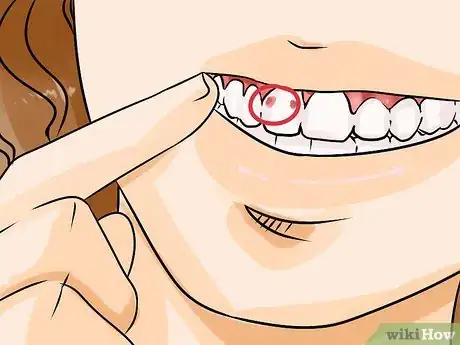
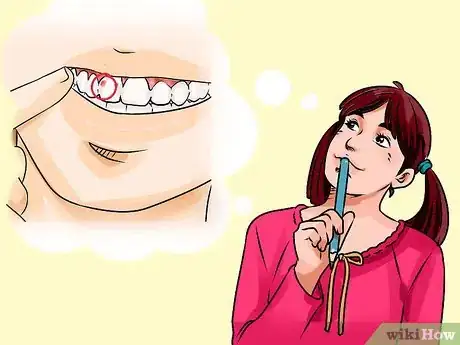
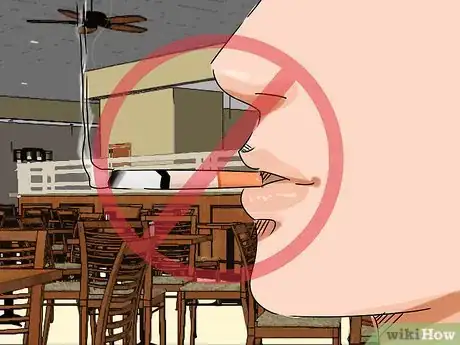
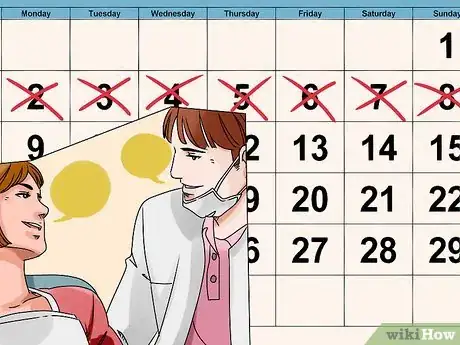
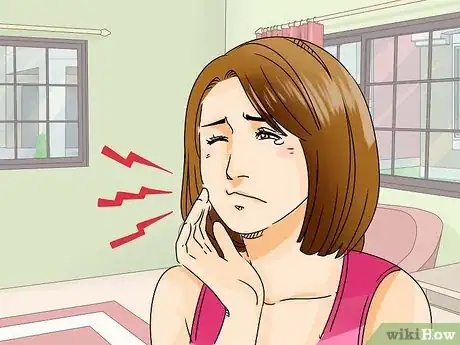







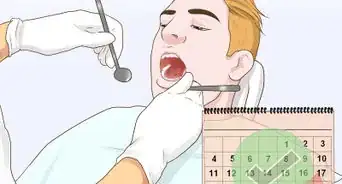


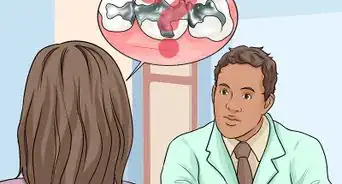
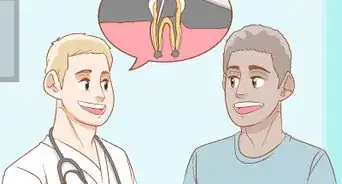
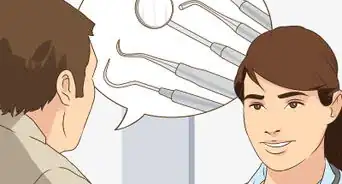






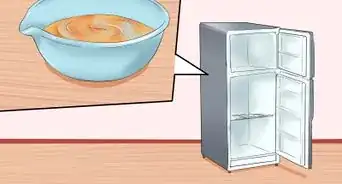








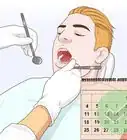

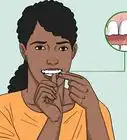




































Medical Disclaimer
The content of this article is not intended to be a substitute for professional medical advice, examination, diagnosis, or treatment. You should always contact your doctor or other qualified healthcare professional before starting, changing, or stopping any kind of health treatment.
Read More...